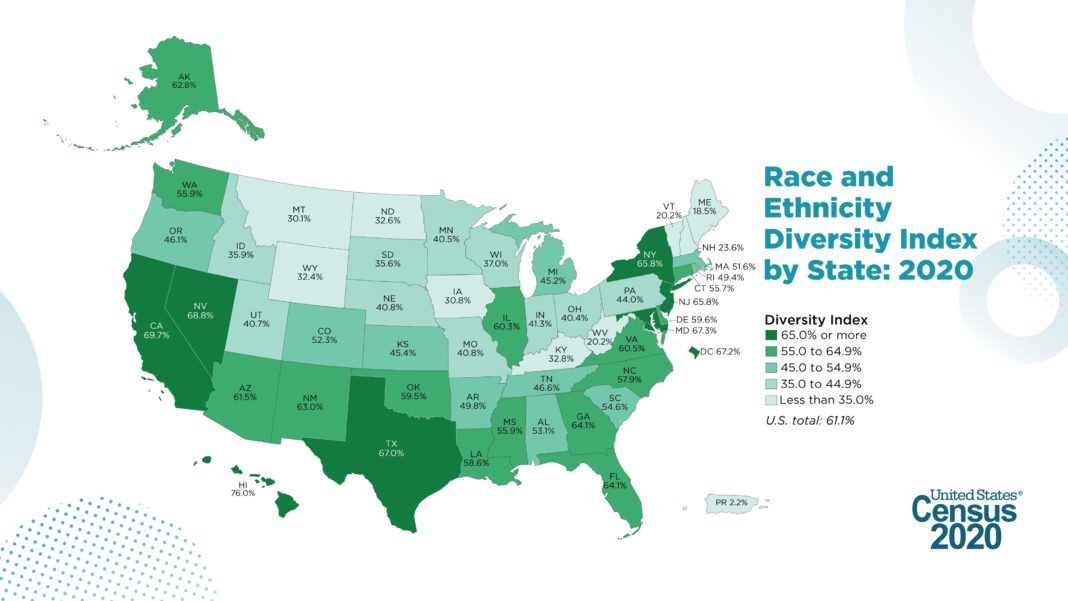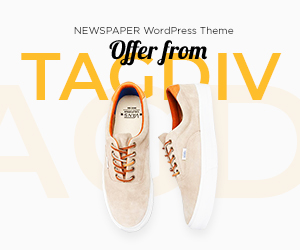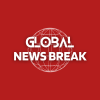The overall racial and ethnic diversity of the country has increased since 2010, the U.S. Census Bureau revealed on Thursday.
The U.S. Census Bureau today released additional 2020 Census results showing an increase in the population of U.S. metro areas compared to 2010. In addition, these once-a-decade results showed the nation’s diversity in how people identify their race and ethnicity.
“We are excited to reach this milestone of delivering the first detailed statistics from the 2020 Census,” said acting Census Bureau Director Ron Jarmin.
“Our analysis of the 2020 Census results show that the U.S. population is much more multiracial and more racially and ethnically diverse than what we measured in the past.” – said Nicholas Jones, Director of Race Ethnicity Research and Outreach.
The Census Bureau also released data visualizations, America Counts stories, and videos to help illustrate and explain these data. These resources are available on the 2020 Census results page.
According to the Bureau, the concept of “diversity” refers to the representation and relative size of different racial and ethnic groups within a population and is maximized when all groups are represented in an area and have equal shares of the population. These measures are used to compare 2010 Census and 2020 Census results.
Today’s release reveals changes in the size and distribution of the population across the United States. The population of U.S. metro areas grew by 9% from 2010 to 2020, resulting in 86% of the population living in U.S. metro areas in 2020, compared to 85% in 2010.
“Many counties within metro areas saw growth, especially those in the south and west. However, as we’ve been seeing in our annual population estimates, our nation is growing slower than it used to,” said Marc Perry, a senior demographer at the Census Bureau. “This decline is evident at the local level where around 52% of the counties in the United States saw their 2020 Census populations decrease from their 2010 Census populations.”
County and metro area highlights:
- The largest county in the United States in 2020 remains Los Angeles County with over 10 million people.
- The largest city (incorporated place) in the United States in 2020 remains New York with 8.8 million people.
- 312 of the 384 U.S. metro areas gained population between 2010 and 2020.
- The fastest-growing U.S. metro area between the 2010 Census and 2020 Census was The Villages, FL, which grew 39% from about 93,000 people to about 130,000 people.
- 72 U.S. metro areas lost population from the 2010 Census to the 2020 Census. The U.S. metro areas with the largest percentage declines were Pine Bluff, AR, and Danville, IL, at -12.5 percent and -9.1 percent, respectively.
The most prevalent racial or ethnic group for the United States was the White alone non-Hispanic population at 57.8%. This decreased from 63.7% in 2010.
New 2020 Census results show geographic distributions and patterns in racial and ethnic diversity across the country.

Image: US Census Bureau 
Image: US Census Bureau
Race and ethnicity highlights:
- The White population remained the largest race or ethnicity group in the United States, with 204.3 million people identifying as White alone. Overall, 235.4 million people reported White alone or in combination with another group. However, the White alone population decreased by 8.6% since 2010.
- The Two or More Races population (also referred to as the Multiracial population) has changed considerably since 2010. The Multiracial population was measured at 9 million people in 2010 and is now 33.8 million people in 2020, a 276% increase.
- The “in combination” multiracial populations for all race groups accounted for most of the overall changes in each racial category.
- All of the race alone or in combination groups experienced increases. The Some Other Race alone or in combination group (49.9 million) increased 129%, surpassing the Black or African American population (46.9 million) as the second-largest race alone or in combination group.
- The next largest racial populations were the Asian alone or in combination group (24 million), the American Indian and Alaska Native alone or in combination group (9.7 million), and the Native Hawaiian and Other Pacific Islander alone or in combination group (1.6 million).
- The Hispanic or Latino population, which includes people of any race, was 62.1 million in 2020. The Hispanic or Latino population grew 23%, while the population that was not of Hispanic or Latino origin grew 4.3% since 2010.
In 2020, at the national level, there was a 61.1% chance that two people chosen at random were from different race and ethnicity groups. Hawaii had the highest DI at 76.0%, followed by California with 69.7%, and Nevada with 68.8%.
Prevalence rankings illustrate the percent of the population that falls into the first-, second- or third-largest racial or ethnic groups in 2020 (Figure 1):
- The most prevalent racial or ethnic group for the United States was the White alone non-Hispanic population at 57.8%. This decreased from 63.7% in 2010.
- The Hispanic or Latino population was the second-largest racial or ethnic group, comprising 18.7% of the total population.
- The Black or African American alone non-Hispanic population was the third-largest group at 12.1%.
The Adult and Under-Age-18 Populations
The 2020 Census showed that the adult (age 18 and older) population group grew 10.1% to 258.3 million people over the decade.
“More than three-quarters, 77.9%, of the U.S. population were age 18 and over,” said Andrew Roberts, chief of the Sex and Age Statistics Branch in the Census Bureau’s Population Division. “The adult population grew faster than the nation as a whole. By comparison, the population under age 18 was 73.1 million in 2020, a decline of 1.4% from the 2010 Census.”
Changes to the adult and under-age-18 populations:
- The District of Columbia had the largest population age 18 and over as a percentage of population at 83.4%. Utah had the largest population under age 18 as a percentage of population at 29.0%.
- Utah also had the fastest-growing adult population at 22.8% growth.
- North Dakota had the fastest-growing population under age 18 at 22.1% growth.
What is the census?
The results from the 2020 census, taken amid the pandemic and partisan sniping about the politicization of the process, are meant to be a snapshot of the population as of April 1, 2020. States use the census data to determine legislative and congressional districts – and the Electoral College votes that come with them. As Census officials explained in July, the data also will provide far-reaching insights and impacts.
Compared with the results from 2010 and earlier surveys, the data show Americans how the population has grown and changed and moved, as well as who our neighbors and communities are – in some sense what it means to be American today.
The census is mandated by Article I, Section 2 of the Constitution. Every ten years, the U.S. Census Bureau conducts a count of the American population, including key demographic details such as race and gender. These data, in turn, are used to draw up congressional districts, as well as in a host of other ways.
The statistics gleaned from the decennial census are used to hand out hundreds of billions annually in federal funding and for everything from drawing school district boundaries to measuring the diversity of police forces and corporate boards. The data can provide the bases for comparisons of the racial makeup of certain populations or the American population as a whole.
A global media for the latest news, entertainment, music fashion, and more.




